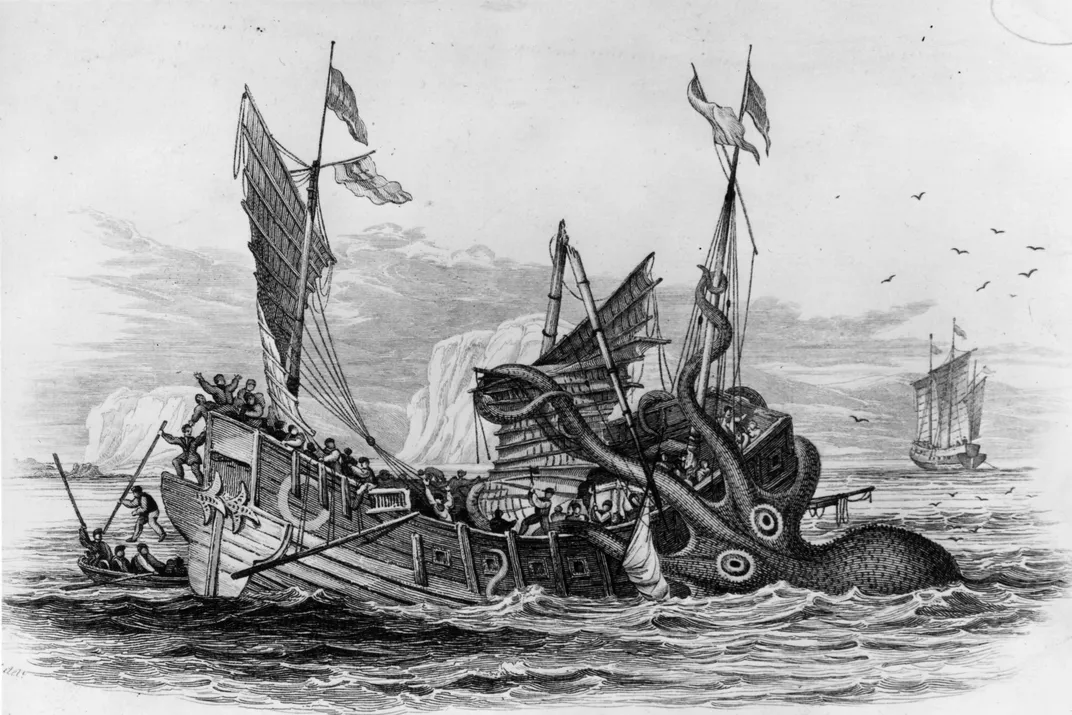The Legend, the History and the Science Behind Seattle’s New Hockey Team Name
NHL fans, meet the Seattle Kraken—named for a mythical beast that may have been inspired by the very real giant squid
/https://tf-cmsv2-smithsonianmag-media.s3.amazonaws.com/filer/00/ab/00abc7ad-6b10-4dfb-866f-add511c48a38/cut.jpg)
Hockey fans in Seattle are rejoicing with the announcement that its new NHL team has a name after more than a year of waiting. The league’s 32nd franchise will be called the Seattle Kraken, reports Emily Kaplan for ESPN.
"There are a lot of obvious connections to Seattle—part because of our maritime history, part of because we have so much water around us—but there is longtime folklore in Seattle and the Pacific Northwest of this mystical Kraken creature that lives just below the surface of the sea, which really captivated people for many years,” Andy Jassy, the CEO of Amazon Web Services and a part-owner of the team, tells ESPN. “That mystique, that intensity and that power that people have long talked about with the Kraken is what we expect our NHL team to play with.”

The kraken’s more ancient origins are in Nordic folklore. The earliest written reference to the kraken goes all the way back to 1180, according to paleontologist Rodrigo Brincalepe Salvador, who describes the mythical sea monster’s history in the Conversation. The nearly 1,000-year-old manuscript, penned by King Sverre of Norway, described various beasts of the deep but the kraken stood out for its enormity.
Salvador writes that the kraken is “perhaps the largest monster ever imagined by mankind,” noting that some descriptions said the creature could be mistaken for an island and estimated its circumference at one and a half miles. The kraken was said to patrol the northern seas surrounding Norway, Iceland and even Greenland where it periodically surfaced to destroy ships with its mast-sized arms or suck vessels down to briney oblivion in a colossal whirlpool.
Despite such fantastical descriptions, the legend was so strong that even Carl Linnaeus, widely considered to be the father of modern taxonomy, included it in the first edition of his 1735 work Systema Naturae. Linnaeus classified the kraken as a cephalopod, the group that includes octopuses, squid and cuttlefish.

Many speculate that the historical accounts associated with the kraken are some feverish retelling of sightings of the real but mysterious giant squid, Architeuthis dux.
The giant squid was first given a scientific name in 1857, after Norwegian naturalist Japetus Steenstrup was able to study the beak of a specimen that had washed up on a Danish beach a few years prior, reported Melissa Hogenboom for the BBC in 2014.
The largest specimen ever measured by scientists stretched 43 feet—though almost half of a giant squid’s length can be accounted for by its pair of long feeding tentacles. By examining squid beaks found in the stomachs of sperm whales, which are known to feed on the giants, researchers estimate that the gargantuan cephalopods could reach lengths of up to 66 feet.
It wasn’t until 2012 that one was filmed in its natural deep-sea habitat. Most of what we know of their biology has come from specimens that have washed up on beaches or were dragged from the depths by fishing gear.
The giant squid is so elusive that even today sightings make the news. Last month, a nearly 14-foot giant squid arrived on a South African beach in its death throes, still spewing ink. Researchers estimate that given the individual’s size it was probably less than two years old.
Though the actual giant squid is nowhere close to the tall tales of Nordic sailors, Seattle’s newly anointed hockey franchise will trade both in the kraken’s mythos as well as its tentacled reality. The team’s logos feature a sucker-lined arm and a glowing red eye. The kraken has taken on many shapes in the minds of mariners and in the renderings of artists. Here's hoping the team’s mascot is just as legendary.
/https://tf-cmsv2-smithsonianmag-media.s3.amazonaws.com/accounts/headshot/alex.png)


/https://tf-cmsv2-smithsonianmag-media.s3.amazonaws.com/accounts/headshot/alex.png)